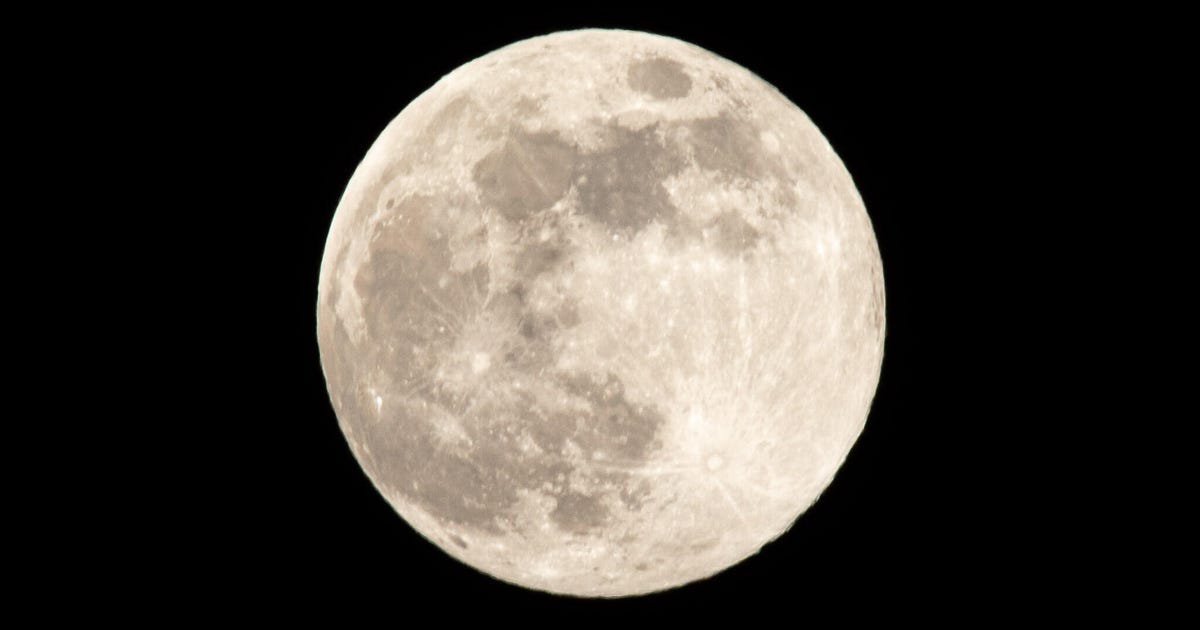
If you’re looking for reassurance that the world keeps turning and that there’s stability somewhere in the universe, Monday night’s strawberry supermoon might offer some celestial solace.
The scientific name for a supermoon is actually a perigee-syzygy moon. It’s a little surprising this name isn’t more commonly used, given that it’s such a fun phrase to say. A perigee-syzygy moon is when the moon is both at its full phase and at the closest point to Earth in its elliptical orbit around us.
The result is a full moon that can appear up to 15% bigger and 30% brighter in the evening sky compared to a normal moon, according to NASA. In the case of this month’s strawberry varietal, however, it’s expected to be closer to 7% bigger and 15% brighter.
The strawberry moniker has nothing to do with the appearance of the moon itself, although any full moon may have a reddish hue near the horizon, especially in areas where hazy conditions are present. Rather the name comes from early berries that ripen and are ready for harvest in June.
Some alternative names for the June full moon, according the Old Farmer’s Almanac include blooming moon, green corn moon, honey moon, mead moon and egg laying moon.
A 15% brighter moon might actually be hard to detect with the naked eye, but it can be helpful to plan to view it right as it rises in the eastern horizon, when it will appear even larger due to an optical illusion.
This also makes it easy to remember when to go supermoon-spotting. Because the full moon is always directly opposed by the sun, you can expect it to rise in the east roughly around the same time the sun sets in the west, depending on the topography on those horizons in your location.
If the weather or your schedule doesn’t cooperate, you can always check out the view via the Virtual Telescope Project’s livestream above. Failing that, you don’t have to wait long for the next supermoon — it’s the next full moon, on July 13.

